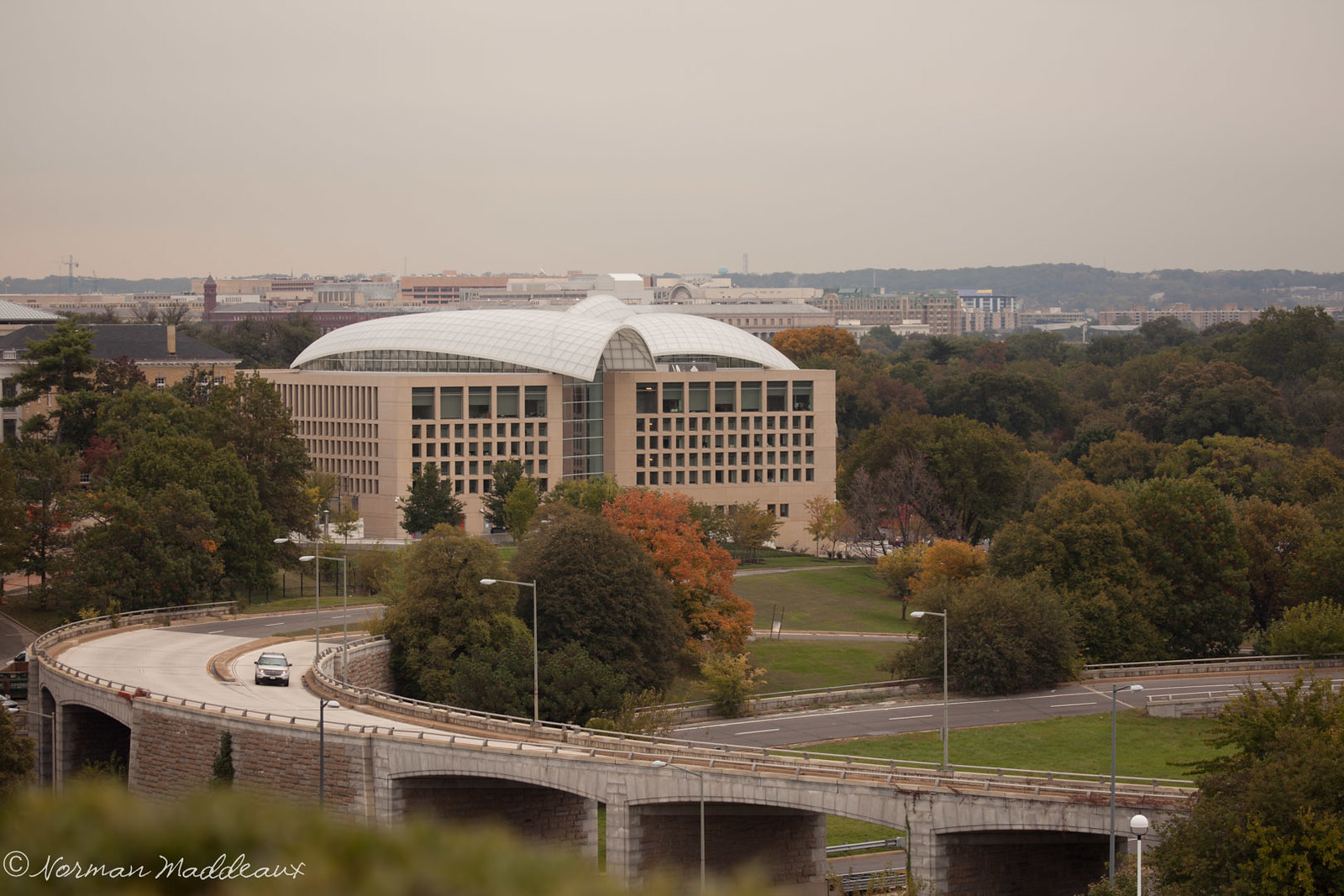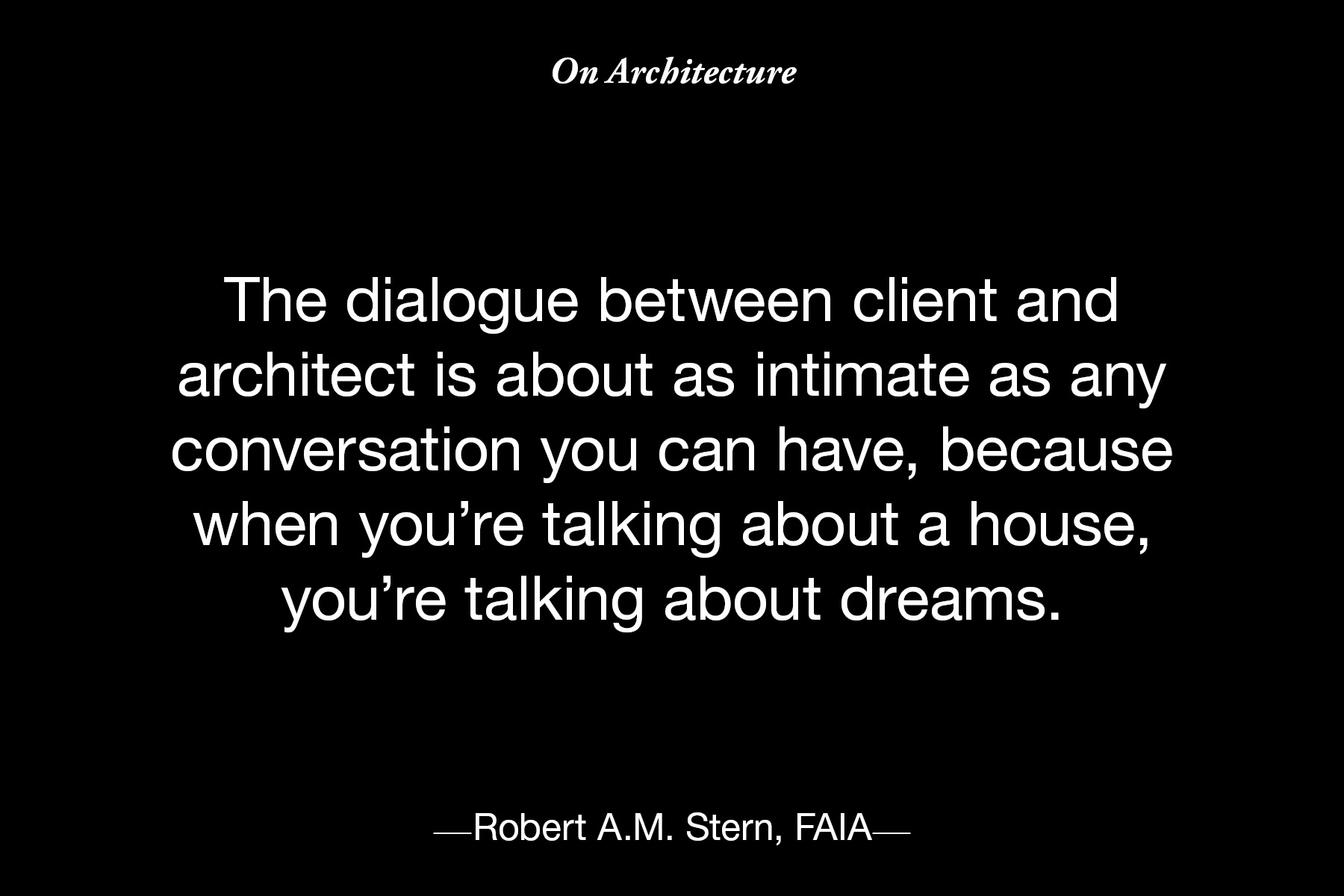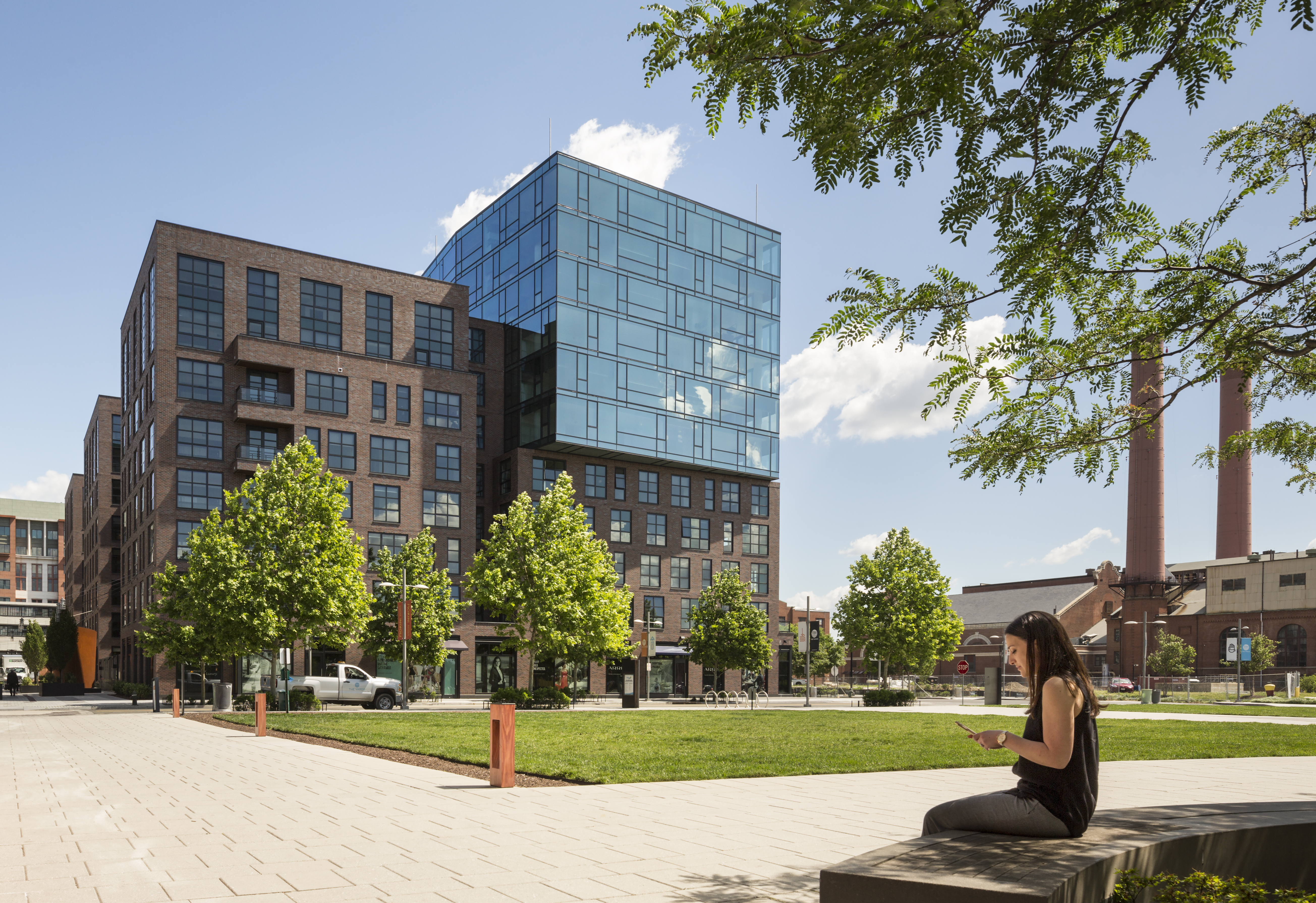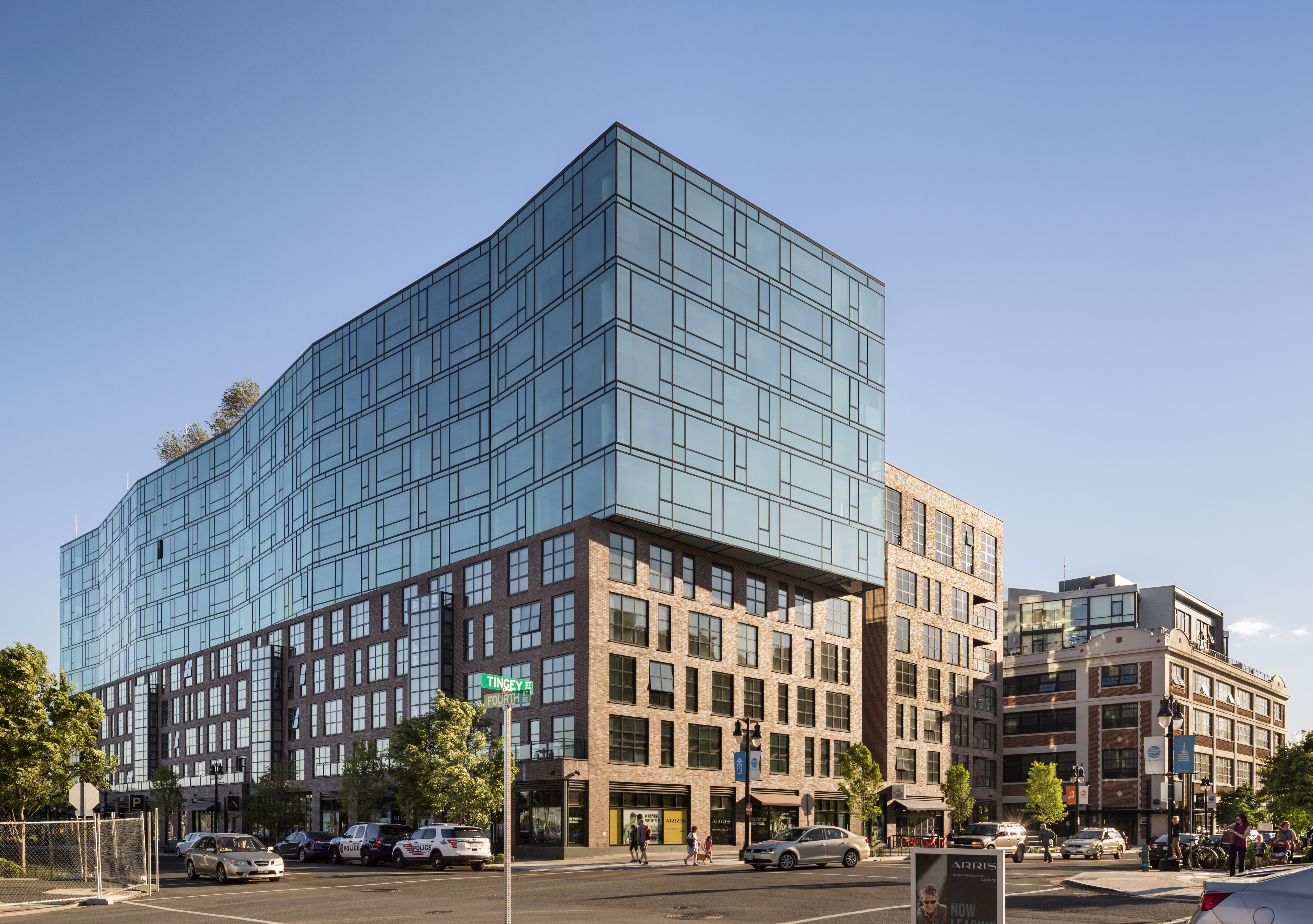On Architecture

Architecture is a profession involving many facets of the built environment. From design and construction to management and maintenance, everything from small buildings to entire cities require successful collaboration between various entities. Protecting the health, safety, and welfare of the public in today’s complex world is a vast undertaking.
Featured Architects
Jeanne Gang, FAIA; Sir Edwin Lutyens OM; Moshe Safdie, FAIA, FRAIC, OAA, SIA; Robert A.M. Stern, FAIA
Jeanne Gang, FAIA
American, 1964–
“If you want to push design into new areas, you have to work closely across the boundaries of people’s trades and professions. If you know the questions to ask, you can pull out the expertise.”






Studio Gang was established in 1997 by architect Jeanne Gang. Not long after, she began work on her most notable project, a mixed-use skyscraper in downtown Chicago known as Aqua Tower. The façade—or skin—of the structure appears like the undulating surface of rippled water, comprised of curvilinear concrete balconies that make it striking and memorable in a sea of traditional high-rise buildings. Gang and her multicity firm have received numerous awards for work championing sustainability, materials, and technology. Beyond work, Gang is involved in research, teaching, exhibitions, and publications.
JG Photo Credits
1. Photo by Marla Aufmuth for TED Conference (CC BY-NC 2.0)
2. Photo by bob(CC BY 2.0)
3. Photo by darwin Bell (CC BY-NC 2.0)
4. Photo by Patrick Gillespie (CC BY 2.0)
5. Photo by ehpien(CC BY-NC-ND 2.0)
1. Photo by Marla Aufmuth for TED Conference (CC BY-NC 2.0)
2. Photo by bob(CC BY 2.0)
3. Photo by darwin Bell (CC BY-NC 2.0)
4. Photo by Patrick Gillespie (CC BY 2.0)
5. Photo by ehpien(CC BY-NC-ND 2.0)
Sir Edwin Lutyens OM
British, 1869–1944“There will never be great architects or architecture without great patrons.”





British architect Sir Edwin Lutyens is best known for his country manor houses with adaptations of various past styles and his gardenlike city plan for New Delhi, the capital of India. He is also recognized for his public buildings, memorials, and bridges. Lutyens’ design for the British Ambassador’s Residence and Embassy in Washington, DC—his only major built work in the United States—resembles an English country manor. In 1925, Lutyens was honored by the American Institute of Architects with a Gold Metal, an award recognizing a body of work that influences the theory and practice of architecture.
SEL Photo Credits
1. Photo © National Portrait Gallery, London
2. Photo by Stephen Richards (CC BY-SA 2.0)
3. Courtesy of the Library of Congress, photograph by Harris & Ewing, LC-DIG-hec-28820
4. Photo by angela n. (CC BY 2.0)
1. Photo © National Portrait Gallery, London
2. Photo by Stephen Richards (CC BY-SA 2.0)
3. Courtesy of the Library of Congress, photograph by Harris & Ewing, LC-DIG-hec-28820
4. Photo by angela n. (CC BY 2.0)
Moshe Safdie, FAIA, FRAIC, OAA, SIA
Israeli-Canadian-American, 1938–“No single individual can command all the knowledge required, and only the most open and receptive composer-conductor, inquisitive and questioning, can navigate the myriad inputs that become part of the architectural creation process.”






Moshe Safdie is an architect and urban planner, as well as educator, theorist, and author. His practice—Safdie Architects—has designed everything from airports, libraries, and museums to entire cities. Safdie’s career began in the 1960s with the realization of Habitat ’67, a pre-fabricated urban housing project for the 1967 World Exposition held in in Montréal. In Washington, DC, Safdie designed the United States Institute of Peace, a light filled structure completed in 2011 for offices, research, and scholarship related to conflict management. It is recognized as the first LEED-certified project on the National Mall.
MS Photo Credits
1. Photo by Joi Ito (CC BY 2.0)
2. Photo by Nameless_1(CC BY-NC-ND 2.0)
3. Photo by Etienne Coutu (CC BY 2.0)
4. Photo by Steve Heap / Shutterstock.com
5. Photo by Norman Maddeaux (CC BY-NC-ND 2.0)
1. Photo by Joi Ito (CC BY 2.0)
2. Photo by Nameless_1(CC BY-NC-ND 2.0)
3. Photo by Etienne Coutu (CC BY 2.0)
4. Photo by Steve Heap / Shutterstock.com
5. Photo by Norman Maddeaux (CC BY-NC-ND 2.0)
Robert A.M. Stern, FAIA
American, 1939–“The dialogue between client and architect is about as intimate as any conversation you can have, because when you’re talking about a house, you’re talking about dreams.”






Robert A.M. Stern is an architect, teacher, and writer based in New York City. His firm, Robert A.M. Stern Architects, was founded more than fifty years ago. With numerous awards and recognition, the firm has completed residential, commercial, and institutional projects around the world. Stern’s projects are considered postmodern, meaning they often incorporate a variety of historical styles. Stern designed several projects in Washington, DC, including 600 13th Street NW (1997), 900 16th Street NW (2016), Arris at The Yards (2016), and 1331 Maryland Avenue SW (2019). He has authored several books on architecture, lectured extensively on the subject of both historic and contemporary architecture, and exhibited widely at galleries and university worldwide. From 1998 to 2016, Stern also served as Dean of the Yale School of Architecture.
RAMS Photo Credits
1. Photo by Historic Districts Council (CC BY-SA 4.0)
2. Photo by Friscocoli (CC BY-NC 2.0) / Brightened from original
3. Photo by NCinDC (CC BY-ND 2.0)
4-5. Photos © Peter Aaron/OTTO for Robert A.M. Stern Architects, Courtesy of WDG Architecture
1. Photo by Historic Districts Council (CC BY-SA 4.0)
2. Photo by Friscocoli (CC BY-NC 2.0) / Brightened from original
3. Photo by NCinDC (CC BY-ND 2.0)
4-5. Photos © Peter Aaron/OTTO for Robert A.M. Stern Architects, Courtesy of WDG Architecture
Back to On Architecture
